Many people attended movies weekly to see the latest movie serials and newsreels. Movies became an effective way for the Government to communicate its message to the masses. The movie topics varied greatly. Some were merely anti-Japanese and others were to allay the public's fears. Still others were patriotic and many focused on increasing industrial production. The U.S. Government, to generate revenue for the war effort, also used this method for War Bond Drives.
Many of the movies the American Government produced during World War Two would never be made today, in our ultra-sensitive society, for fear of offending someone. When you watch these movies, try not to judge them through today's sensitivities but for what they were - a method to motivate the majority of our nation into action against ruthless foes. Remember, America's way of life and ideals were threatened as they had never been threatened before.


World War Two Home Front
One of the key factors in winning a war is the support of the nation's citizens. Support can come from various sources but fear and patriotism are primary motivators. In the 1940s, radio was the mass communication device. Television was not commercially viable and not available to much of the nation.
Radio served an important part in informing Americans of war news but also aired public service announcements (PSA) informing a wide audience. Many of the announcements were aired as part of the show or by the lead actors and actresses.
Two PSAs from the June 20, 1944 radio program Mollé Mystery Theater:
Do not discuss war secrets to "keep our boys alive".
U.S. Employment Office seeking women workers.
War Bonds to finance the war were crucial too. Listen to a plea from actress Virginia Bruce for the Fourth War Loan aired during the Suspense radio program on January 27, 1944.
Rationing of scarce items was also common. Coupons were needed to buy even the most common items, from butter to tires. This is an ad from Signal Oil about tire rationing.
Listen to an radio advertisement about gasoline rationing from Signal Oil Company's The Whistler radio program from 1944.

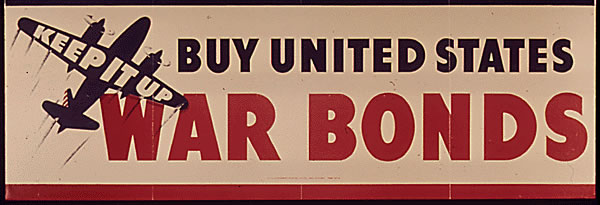
Win Hearts and Minds
One of many concerns was that of being invaded. Japanese submarines had been spotted off the coast of California. After Pearl Harbor, was the West Coast next? To help generate confidence in the American military, the U.S. Government circulated the nine-minute1941 movie Ring of Steel. The movie is spoken from the American soldier's perspective by Spencer Tracy and chronicles the many victories and accomplishments made by American soldiers.
As in any war, secrecy is of paramount importance. Informational films drove home the point the enemy was listening for troop movements and other military secrets. In the 10-minute 1941 video Safeguarding Military Information, two vignettes are offered to dramatize the importance of keeping military secrets. One is of a sailor trying to convince his girlfriend he wasn't cheating on her and the other is of a proud mother announcing her boy had been selected for a special mission. Their careless talk had dire consequences.
Winning a war takes everyone's efforts - not only the troops who do the fighting but the people at home who were called upon to make sacrifices (Unlike today's war on terror, American society has not really been inconvenienced as during the both World Wars.). Keeping morale of the troops high was important but doing the same for the people at home was also important. In the 15-minute movie, It's Everybody's War, presented by 20th Century Fox and distributed by the U.S. Government Office of War Information, Henry Fonda describes a town's emotions when their National Guard outfit is deployed to the Philippines, an American commonwealth at the time, and the town's reaction as casualties mount during the fall of Manilla, Corregidor, and Bataan. Citizens are encouraged to organize and support the troops in meaningful ways - conservation, doing without, donating items to the military, and buying war bonds to help finance the war.
Our Enemy - The Japanese is a 20 minute anti-Japanese training film produced for U.S. Navy personnel in 1943. The narration and introduction was by former U.S. ambassador to Japan, Joseph Grew, who stated the intent of the movie was to help sailors understand Japanese people who are described "as different from ourselves as any people on this planet" and whose "thinking is 2,000 years out-of-date". The film shows scenes of Tokyo and every day life in Japan. A history of Japan, including Japan's intent for Tokyo to be the world's capital, is presented from an American war-time perspective. The destruction from the 1923 earthquake was shown and how America spent millions of dollars to help Japan rebuild was described.
The attitude of the time was that Japanese were fanatical, inferior, but war-like. Japan, after all, was the only nation during World War II to attack U.S. territories. Fear of a Japanese invasion on the West Coast and that the invading forces would receive assistance from U.S. residents of Japanese descent helps explain why on February 19, 1942 President Franklin Roosevelt ordered all Japanese and Americans of Japanese decent in the western United States to be interned in "relocation centers"1. Many would remain in the centers for the rest of the war1. An account of the forced relocation and the Government's reasoning behind the decision was described in this nine-minute 1943 movie, Japanese Relocation. This movie also shows how the camps operated and the many 'happy' people who resided there.
Production, Production, Production
No matter what company was making the planes, tanks, bombs, and other war materials, industrial production was important and many of the movies produced focused on the business side of war and the importance of not wasting time.
In the General Motors 10-minute promotional video, Victory is Our Business, G.M. extols how the company is helping America win the war against the Axis Powers. The film shows production at many of its Dayton, Ohio factories. At this time, G.M. is producing 10% of the nation's industrial output. There are quite a few images of tanks and planes in action.
Videos like Conquer the Clock (10 minutes) and exalts the need to use time efficiently and to make the most of it. In this 1943 movie, scenes of industrial production were shown with narrative telling American workers they can win or lose the war based on what they do. A reenactment, telling the story of Jean and how wasting time by not carefully inspecting a cartridge, causes a misfiring on the field of battle. The result is a dead American soldier. Jean was an unintentional saboteur. A little different is that this movie also showed a "white collar" worker could be a time waster and the unintended result.
In the 1944 management film Every Minute Counts (10 minutes), George was a hard worker but was always late, Jean was charged with absenteeism because business hours aren't long enough, and Harry was a bench worker who was a loafer. Hal was their supervisor and was responsible for his employees and was asked why he hadn't taken action with his sub-par workers. The film outlines possible resolutions for these deficiencies.
Another management film acknowledged how World War 2 caused a major shift in American society. Men were in the trenches fighting our enemies. Many of the traditionally male dominated industrial jobs became vacant. Women filled these jobs in numbers never seen before. Instructional films like the 1944 film Supervising Women Workers (10 minutes) were made to help management cope with the different needs of women. This film depicts societal norms of the time including management's unfamiliarity in managing female employees and the lack of experience woman had in working in industrial settings. Some of the managerial and training points made in the film are still relevant today.
Citation:
1 Time Almanac with Information Please 2005, copyright 2004, Pearson Education, Inc., page 686.
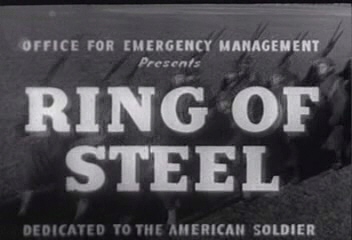
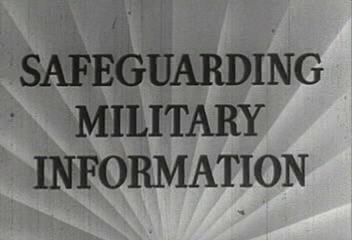
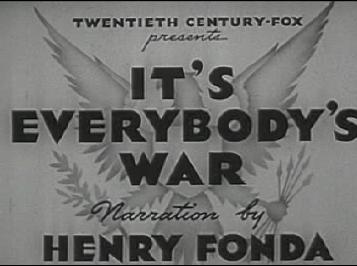
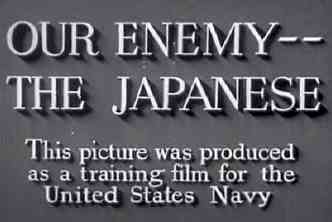
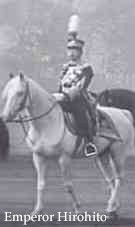
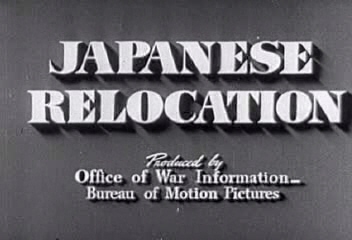
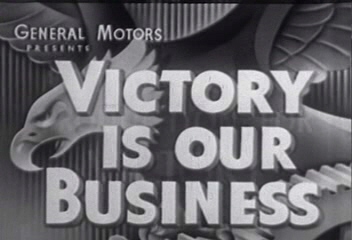
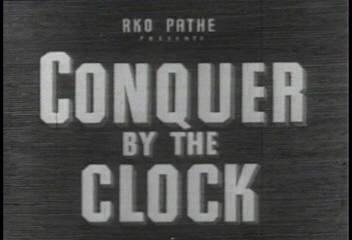
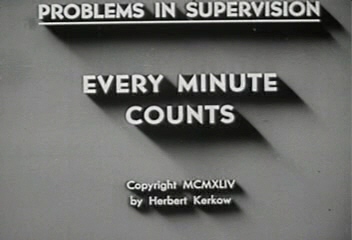
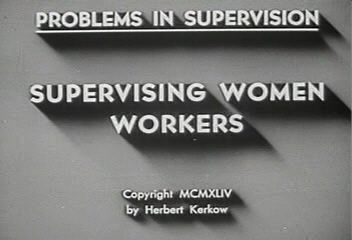
Please note: The audio and video on this page require Windows Media Player and may take a moment to load.
This movie focuses on the internment of people of Japanese ancestry but people of German and Italian decent were also interned by the U.S. Government. Of course, this receives much less notariaty.
Click the image above to watch the video.
Click the image above to watch the video.
Click the image above to watch the video.
Click the image above to watch the video.
Click the image above to watch the video.
Click the image above to watch the video.
Click the image above to watch the video.
Click the image above to watch the video.
Click the image above to watch the video.
Please note: The audio and video on this page require Windows Media Player. The player will launch in a new window and the media may take a few moments to load.















